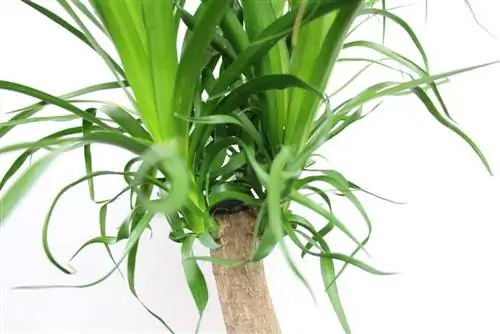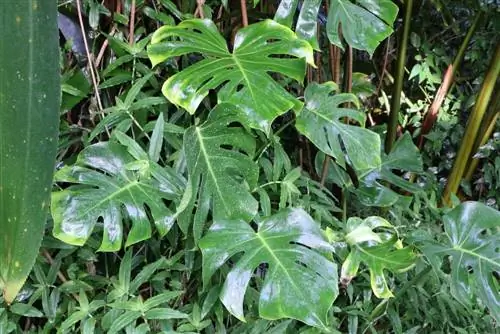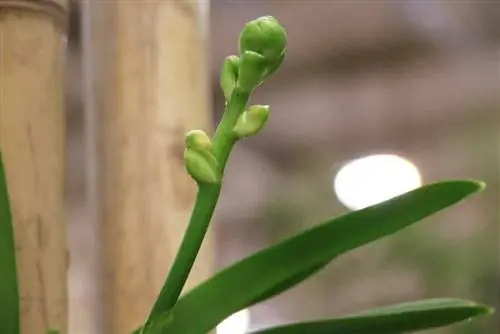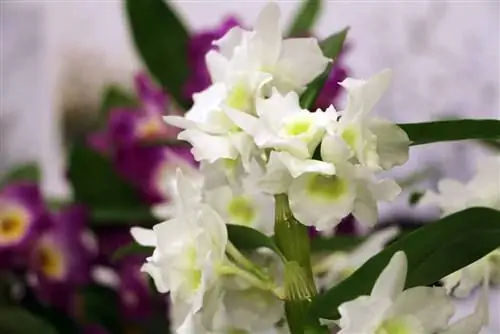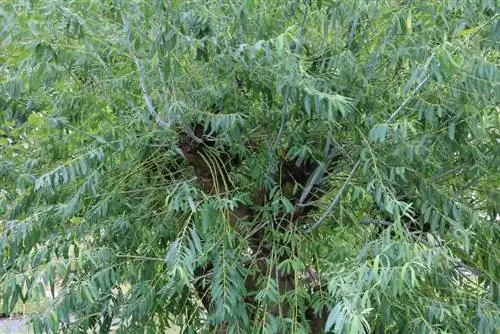- Author admin [email protected].
- Public 2023-12-17 03:39.
- Last modified 2025-06-01 06:48.
Evergreen garden sculpture, opaque hedge, elegant eye-catcher - boxwood is the jewel in every green realm, both in terms of ideas and material. While its emotional value cannot be outweighed by money, the actual purchase puts a noticeable strain on the financial budget. This is particularly due to the extremely leisurely growth of the ornamental shrub. The bargain hunters among hobby gardeners therefore appreciate that boxwood is very easy to propagate through cuttings. The following lines reveal exactly how the procedure works, peppered with the best tips.
The best time
Although boxwood can be propagated by cuttings throughout the year, the following arguments speak for a date during mid and late summer:
- the branches of this year's shoots are already sufficiently woody
- Good resistance to fungal diseases has developed at the peak of the vegetation phase
- mature boxwood shoots are strong enough to cope with the process, which can take up to 2 years
This argument applies to both methods of propagation from cuttings, which are explained below.
Small cuttings
If the mother plant is still small, it naturally donates small cuttings as propagation material. This version of breeding is also recommended for hobby gardeners who simply cannot bring themselves to cut out long sticks from their tall boxwood. This is how the process works:
- cut several cuttings with a length of 15-20 cm
- shorten the shoot tip by 3-5 cm with a sharp knife
- Pluck the leaves in the lower third with your fingers
- Dip each cutting into a rooting powder using the basal interface
As you proceed, fill small growing pots with a lean substrate, such as potting soil, herb soil or commercially available growing substrate. Place the prepared cuttings in here and water them. Prudent hobby gardeners disinfect the substrate beforehand to ensure that there are no fungal spores, viruses or pests in the potting soil. To do this, fill the growing substrate into a fireproof bowl and loosely place a lid on it. The process takes 30 minutes in the oven at 150 degrees top and bottom heat. It's quicker in the microwave at 800 watts within 10 minutes.
Tip:
Forward-looking hobby gardeners use Jiffy peat pot plates to plant the shoots. Since these break down in the soil, you save yourself and the cuttings from having to separate them later.
Care during rooting
The cultivation pots or multi-pot plates go into a mini greenhouse with a transparent hood. When placed in a partially shaded spot, a warm, humid microclimate develops, which has a beneficial effect on rooting. The substrate must not dry out in the following weeks and months. The cover is ventilated regularly to prevent mold from forming.
Tip:
Cut cuttings root more quickly than cut cuttings. To do this, cut off a long boxwood branch and tear off the side shoots with a jerk. The remaining piece of bark is only shortened very slightly before inserting, as the roots will sprout more quickly from this.
Large cuttings
Propagating a boxwood tree using small cuttings can take up to two years. If you don't have that kind of patience, you can opt for using large cuttings. The work involved is a little more complex, but in return you can look forward to the first shoots next spring. Follow these steps:
- cut the desired number of annual cuttings in October
- Semi-woody head cuttings with a pencil-thick base are perfect
- defoliate every offshoot in the lower third
- dip the interface in rooting powder
This high-speed method of propagating boxwood through cuttings does not involve the use of a seed tray or a greenhouse. Rather, place the prepared shoots directly into the bed. In order for rooting to take place quickly in the open air, the soil must be processed professionally.
Soil preparation
Choose a partially shaded spot in the garden that is ideally protected. The soil is nutrient-rich, humus-rich and loose, without the risk of waterlogging. Rake the bed well and pull out the weeds. Stones and roots are removed. The finer the soil is, the more beneficial this is for rooting. Adding sifted compost or a few handfuls of potting soil will help optimize.
Planting and caring for cuttings
Immediately after preparing the soil, the cuttings are planted. How to do it right:
- Pre-drill planting holes with a pricking stick at a distance of 10-20 cm
- Insert the boxwood cuttings with the leafless area
- Press the soil all around and water
If winter is just around the corner, adequate protection is recommended. Protect the bed with pine branches or a thick layer of leaves. When supplying water, remember that the boxwood cuttings also need to be watered in winter. This is particularly true in the case of severe frost. If the weather is dry, sunny with temperatures well below zero and there is no snow, the future box trees are threatened by drought stress. Therefore, water your plants on a frost-free day. The winter protection is removed as soon as the mercury column consistently exceeds the zero degree mark in spring. Otherwise, mold could form or lurking fungal spores could take advantage of the opportunity.
If root formation proceeds as desired and fresh shoots appear, the young plants are stable enough to be transplanted to their final location next spring.
Willow water instead of rooting powder
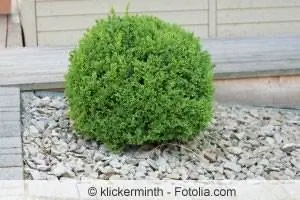
Chemical aids of any kind are frowned upon in natural gardens. This doesn’t just apply to fertilizers or pesticides. For an ecologically oriented hobby gardener, it is a matter of honor to use a natural alternative when propagating boxwood using cuttings as a rooting aid. In any case, it makes little sense to invest the money saved by breeding offspring yourself in cost-intensive preparations. Willow water is an effective and free alternative to encourage cuttings to root quickly. The secret of effectiveness lies in the natural growth regulators found in young willow branches, especially in the branch tips. In addition, willows containing indolebutyric acid contain a growth hormone that stimulates hesitant boxwood roots. Last but not least, the salicylic acid it contains makes a valuable contribution to preventing mold. You can make this little miracle of nature yourself using this recipe:
- Cut off several annual willow branches
- Cut into small pieces while they are still fresh
- Pour into a heat-stable container and pour boiling water over it
- Put a lid on and let it steep for 24-36 hours
- Strain the willow water - done.
If stored in a cool location, the natural rooting agent will last for 3-4 weeks. Use it as an alternative to irrigation water to keep the growing substrate or bed soil with the boxwood cuttings moist. Since the lime content of the boiled water has been greatly reduced, compensate for this by adding algae lime or vital lime every 4 weeks.
The best tips at a glance
Here again the best tips for propagating boxwood through cuttings:
- Best period: the weeks in mid- and late summer until October
- Small cuttings: in the seed tray or mini greenhouse
- Large cuttings: rapid propagation directly in the garden bed
- Cut cuttings root more quickly than cut cuttings
- Peat pots save later isolation
- Disinfect the growing substrate in the oven or microwave
- Never expose boxwood cuttings to the blazing sun
- Winter protection recommended
- Willow water instead of rooting hormone
When working on boxwood propagation through cuttings, consider the toxic content of the ornamental tree. Wearing gloves should therefore not be neglected.
Conclusion
To propagate boxwood through cuttings, there are two methods to choose from. Small cuttings take a longer time to root than larger cuttings that can be placed straight into the bed. The best time to start the work is late summer. In this phase of vegetation, the half-woody head shoots are already sufficiently mature to be able to cope with this challenge. Homemade willow water in a completely natural way makes an additional contribution to the development of a vital root system.


